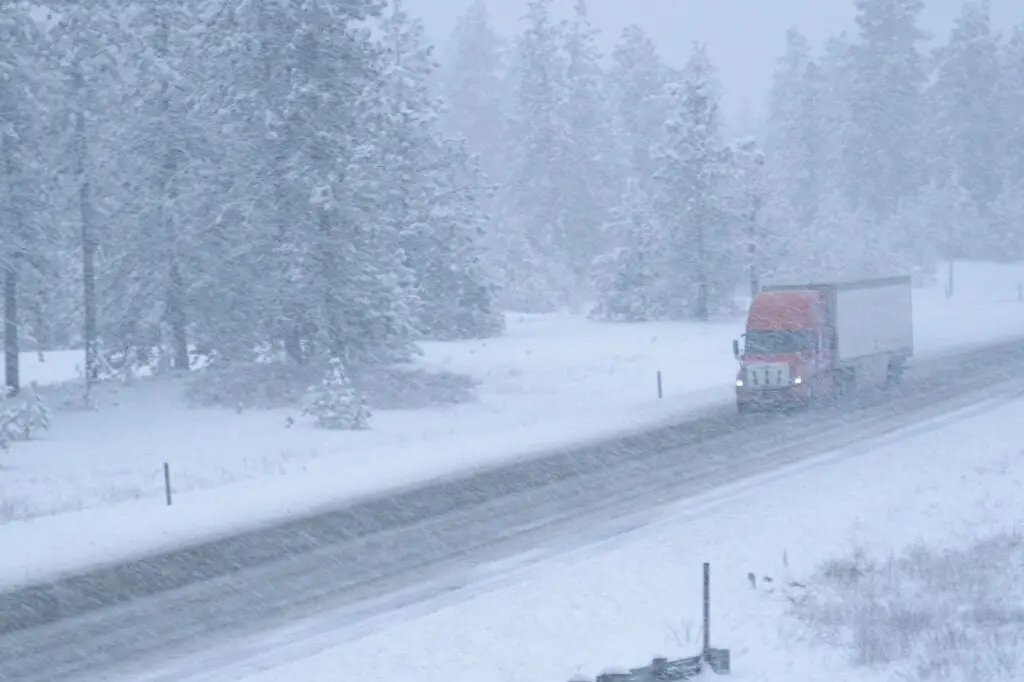Snowfall is one of the things that people look forward to in winter (although some of us feel a sense of impending doom when those first flakes fall), and the snowiest cities in the US get quite a bit of it every winter. It’s an excellent excuse for staying inside with a fire and hot chocolate curled up on the couch. But snow also has its downsides – slippery roads, snow days off work, and shoveling out your car. If you’re looking to buy, rent or travel somewhere where you can enjoy the white stuff, read on.
For our snowiest US cities update for 2022, we’ve tweaked our list to include any city above 50,000 people, as well as updated to the latest available climate data from NOAA.
Top 10 Snowiest US Cities
Syracuse leads our list, thanks to its prime position near Lake Ontario. The city is about 20 miles from the lake, and it typically gets the heaviest snow when the wind blows from the west-northwest across Lake Ontario.
This allows air to pick up copious amounts of moisture, which falls as heavy snow across the region. Many of the snowiest US cities, including Erie, PA, Buffalo, and Rochester, NY, are located here.
- Syracuse, New York: 114.7″
- Buffalo, New York: 91.9″
- Rochester, New York: 89.3″
- Flagstaff, Arizona: 87.5″
- Duluth, Minnesota: 83″
- Erie, Pennsylvania: 81.1″
- Casper, Wyoming: 76.6″
- Grand Rapids, Michigan: 75″
- Anchorage, Alaska: 73.2″
- Portland, Maine: 70.3″
Why Many of These Cities are on the List: Lake Effect Snow

The reason for many of these cities’ high snowfall is that they are near large bodies of water, specifically the Great Lakes. When cold air passes over the warmer lake, it picks up moisture and forms clouds. As those clouds move inland, they cool further and dump their load in heavy snow on land-locked regions like Buffalo or Duluth.
Lake effect snow is a common phenomenon throughout the Great Lakes region. Other snowiest US cities like Rochester and Erie, are on the eastern shores of Lakes Ontario and Erie, respectively. There’s typically a wind direction that favors snow in these areas. Westerly winds across the lakes are best for Buffalo, Erie, and Rochester; however, a northerly wind typically brings lake effect to Syracuse.
The Great Lakes typically freeze over by the middle of the winter, shutting off the heaviest snow in the region. However, with climate change, the lakes have begun to freeze over later and later, extending the threat of heavy lake effect snow, which has led to some pretty impressive seasonal totals in the last few years, making these snowiest US cities even snowier — if it’s cold enough.
Experience the fascinating world of weather with the second edition of Weather Watch: An Introduction to America's Weather and Climate. This book doesn't just explain weather and climate concepts—it brings them to life.
Weather Watch is perfect for teenagers and adults who wish to deepen their understanding of the dynamic world of meteorology. Simplifying the complex, this book breaks down the science of weather into smaller, easily digestible concepts, allowing you to build on your knowledge with each chapter.
Here's what to expect:
- Detailed insights on clouds, pressure and wind, reading weather maps, hurricanes, and tropical storms
- Enlightening discussion on climate change
- Essential guidance on purchasing a weather station
- Critical information on severe weather and tornadoes
- Learning how to forecast the weather yourself
This second edition comes completely reformatted with over 30 pages of new content, including advanced weather map analysis and space weather. It's more visually appealing with additional illustrations and graphics. Each chapter now ends with handy links for more in-depth learning, and sprinkled throughout the book are captivating American weather events, serving as real-life illustrations of introduced concepts.
Why Flagstaff Gets So Much Snow
Flagstaff gets a lot of snow because it’s located in an area where mountain ranges surround extensive flat plains. When cold air blows over the mountains, moisture condenses and falls as snow on the other side – which is why Flagstaff averages around 100 inches annually.
Why It Snows So Much in Boulder, Colorado
Boulder gets a lot of snow because it’s located in the Rocky Mountains, as cold air from Canada and Alaska frequently blows over. As those winds descend mountain slopes, they pick up moisture and deposit it as heavy snow on Boulder.
Winter Storm Safety Tips

Whether you’re heading out to brave the elements or are stuck at home, it’s essential to know how to stay safe during snowstorms, even if you’re not located in one of the snowiest US cities we just talked about. Here are some tips for staying warm and avoiding potentially dangerous situations.
- If you have a car, keep your gas tank full – that way, if the roads get too bad, you can still get to work.
- If you don’t need to go outside, stay inside – staying warm is the best way to avoid hypothermia and frostbite.
- Pack an emergency kit in case of power outages or car trouble — it should include non-perishable food items, water bottles, a flashlight with extra batteries, first aid supplies, and other necessities.
- If you need to go outside, wear multiple layers of clothing — it’s better to be too bundled up than underdressed when the wind chill is below zero.
- Avoid walking on ice if possible – not only can you slip and fall, but winter boots are designed for fashion over function in icy conditions.
- Avoid driving on snow-covered roads whenever possible – you should only drive if necessary, and it’s safer to stay at home than risk crashing into another car or sliding off the road.
- If your power goes out during a winter storm, turn off all appliances that might cause a power surge when they come back on.



